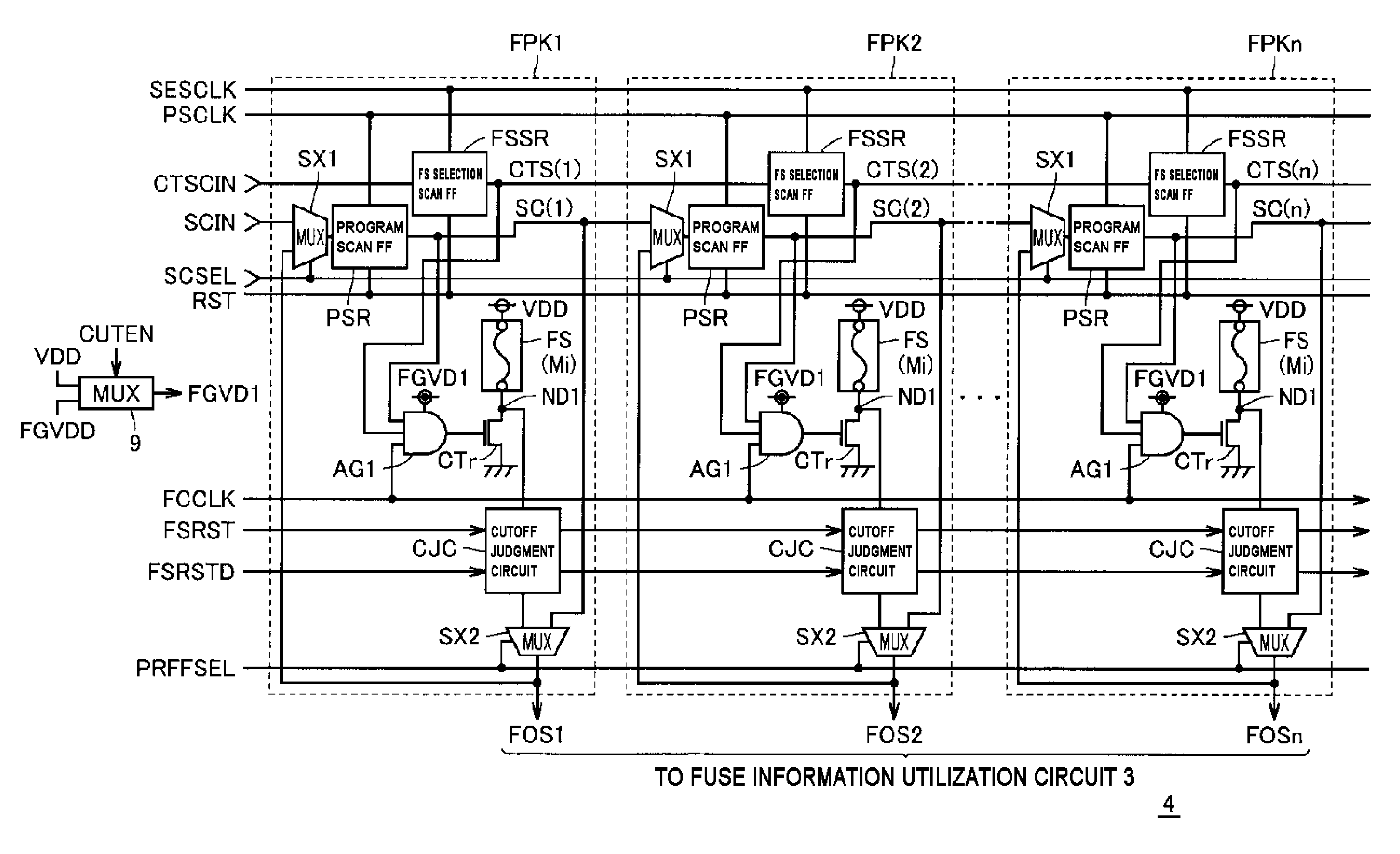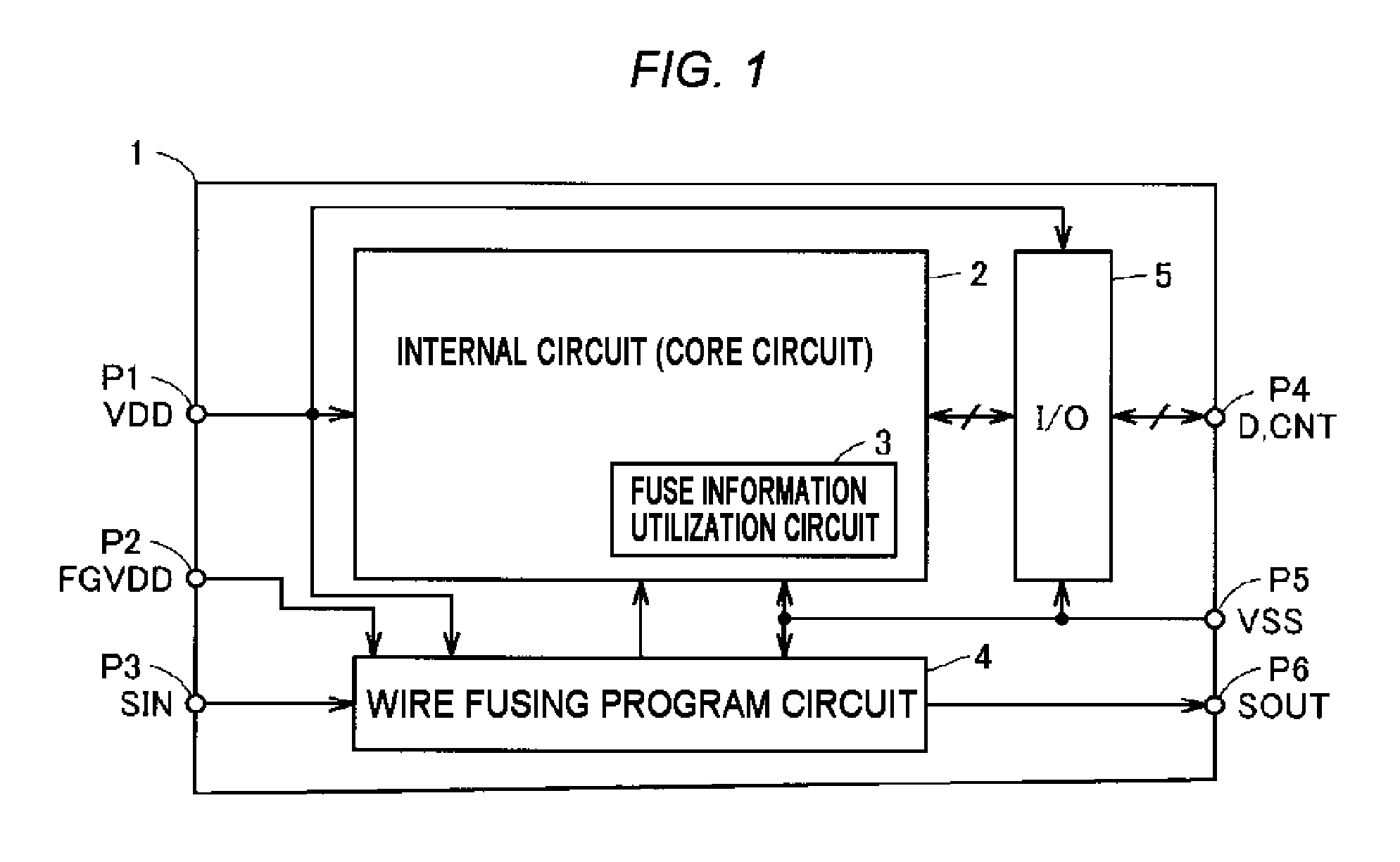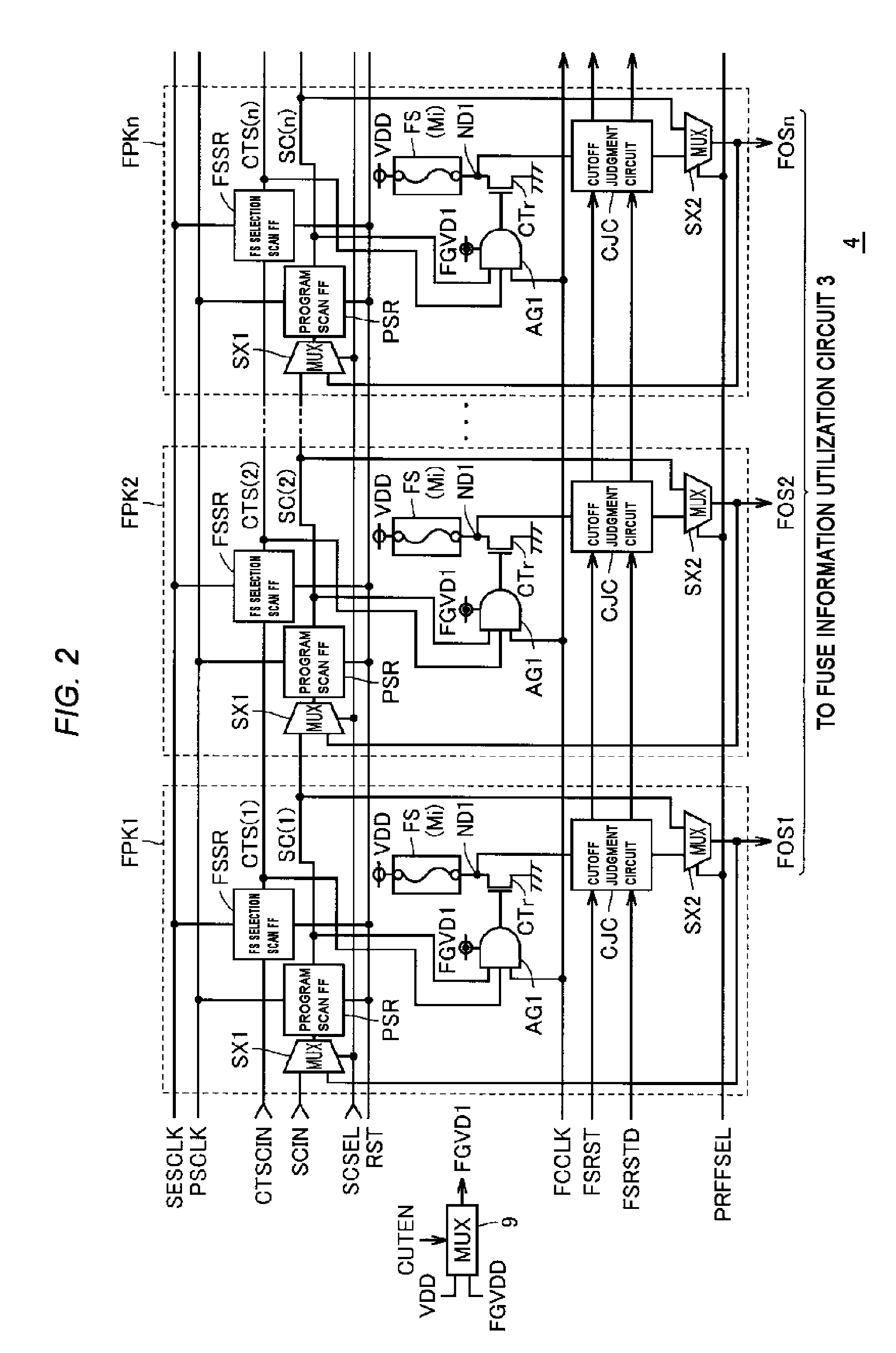Semiconductor device
a technology of semiconductor devices and semiconductors, applied in semiconductor devices, basic electric elements, instruments, etc., can solve problems such as increase in layout area, and achieve the effects of reducing the layout area, preventing copper diffusion, and reducing the line width of fuses
- Summary
- Abstract
- Description
- Claims
- Application Information
AI Technical Summary
Benefits of technology
Problems solved by technology
Method used
Image
Examples
first embodiment
[0056]FIG. 1 is a diagram roughly showing a general configuration of a semiconductor device according to a first embodiment of the present invention. In FIG. 1, a semiconductor device 1 includes an internal circuit (core circuit) 2 that realizes predetermined functions, a wire fusing program circuit 4 that fixedly stores information that specifies the operation state or operation aspect of the internal circuit 2 (information on the internal circuit), and a signal input / output (I / O) circuit 5.
[0057]The semiconductor device 1 may be formed over one semiconductor chip or integrated over the same chip as that of the functional blocks, such as another processor and a memory, and the semiconductor device is equivalent to a semiconductor integrated circuit device.
[0058]The internal circuit 2 receives a ground voltage VSS given from outside via a ground pad P5 as a reference voltage as well as receiving a power source voltage VDD given from outside via a power source pad P1 as an operating ...
first modified example
[0178]FIG. 26 is a diagram showing a first modified example of the first embodiment, to be compared with FIG. 10. In FIG. 26, in the first modified example, a plurality (eight in the figure) of the dummy fuses DFU is arranged on both sides of the fuse FU, respectively. The fuse FU extends in the longitudinal direction and the dummy fuses DFU extend in the transverse direction.
[0179]Each wiring width of the fuse FU and the dummy fuse DFU is set to the minimum line width in the fuse formation region. The interval between the fuse FU and each dummy fuse DFU is set to the minimum interval in the fuse formation region. The dummy fuses DFU are arranged at equal intervals and the interval between the two neighboring dummy fuses DFU is set to the minimum interval in the fuse formation region. Therefore, since the exposure condition of the fuse FU and the dummy fuse DFU is optimized by the OPC in the manufacturing process, it is possible to form the fuse FU with the minimum line width.
[0180]...
second modified example
[0181]FIG. 28 is a section view showing a second modified example of the first embodiment, to be compared with FIG. 5. In FIG. 28, on the surface of a P-type well (P well) 130, N-type active regions (impurity regions) 134a to 134d are formed spaced from one another. Under the P well 130, a deep N well 132 is formed and thereby the P well 130 is separated from other circuit formation regions. The P well 130 is disposed commonly in the fuse program circuit.
[0182]Over the surface of the P well 130 between the impurity regions 134a to 134d, gate electrode wires 136a, 136b, and 136c formed by, for example, polysilicon, are arranged. These gate electrode wires 136a to 136c and the active regions (impurity regions) 134a to 134d form the fusing current supply transistor CTr. That is, the fusing current supply transistor CTr is configured by a plurality of unit MOS transistors arranged in parallel and these unit MOS transistors are formed by the active regions and the gate electrode wires sh...
PUM
 Login to View More
Login to View More Abstract
Description
Claims
Application Information
 Login to View More
Login to View More - R&D
- Intellectual Property
- Life Sciences
- Materials
- Tech Scout
- Unparalleled Data Quality
- Higher Quality Content
- 60% Fewer Hallucinations
Browse by: Latest US Patents, China's latest patents, Technical Efficacy Thesaurus, Application Domain, Technology Topic, Popular Technical Reports.
© 2025 PatSnap. All rights reserved.Legal|Privacy policy|Modern Slavery Act Transparency Statement|Sitemap|About US| Contact US: help@patsnap.com



